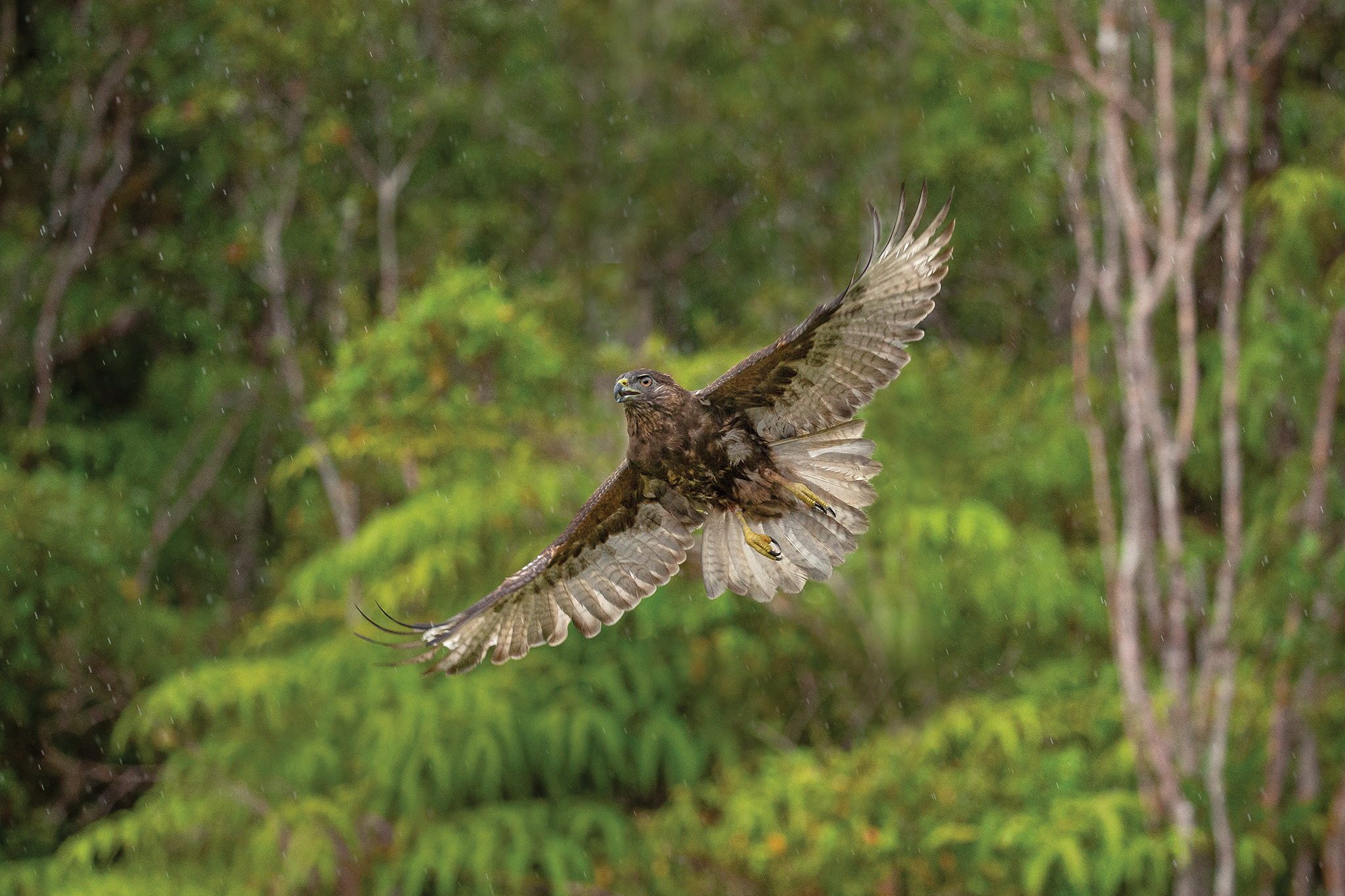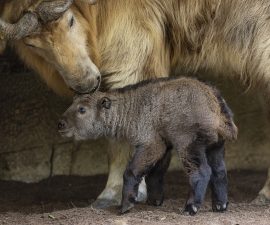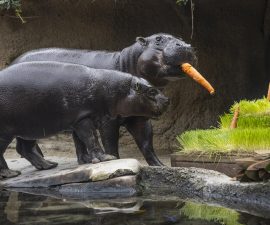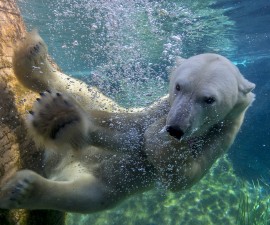BY James Sheppard, PH.D., Bryce Masuda, M.S. and Amy Durham
James Sheppard, Ph.D., is a Recovery Ecology scientist for San Diego Zoo Wildlife Alliance;
Bryce Masuda, M.S., is a conservation program manager for San Diego Zoo Wildlife Alliance;
Amy Durham is a research assistant for San Diego Zoo Wildlife Alliance.
Keeping Track of the Hawaiian Hawk
The ‘io, also known as the Hawaiian hawk, is a medium-sized species of raptor with a wingspan of about three feet. When they’re soaring across the open fields and dense forest canopies of their island home, you might catch a glimpse of the white undersides of the flight feathers of these otherwise dark-brown birds. The ‘io is endemic to the Big Island of Hawai‘i, where it plays important ecological and cultural roles.
Preserving an Avian Cultural Icon
The ‘io is a clever and adaptable bird that can thrive in a variety of habitats. They live in forests, grasslands, and even suburban backyards, at elevations ranging from sea level to over 6,000 feet. They typically bond and mate with one partner for life, building a nest together in trees, and taking turns incubating eggs. An important predator in ecosystems throughout the island, the ‘io opportunistically forages on a wide range of prey, including insects, small mammals, and even other birds. It plays a crucial role in controlling the populations of other wildlife, especially non-native, introduced rodents. For example, ‘io prey on mice and rats that can damage crops and spread disease. The ‘io is well-recognized and held in high esteem by locals. Native Hawaiians consider them an ‘aumakua—a visible manifestation of a family or personal god, and they occupy a central place in the culture, art, and traditions of the Hawaiian Islands.
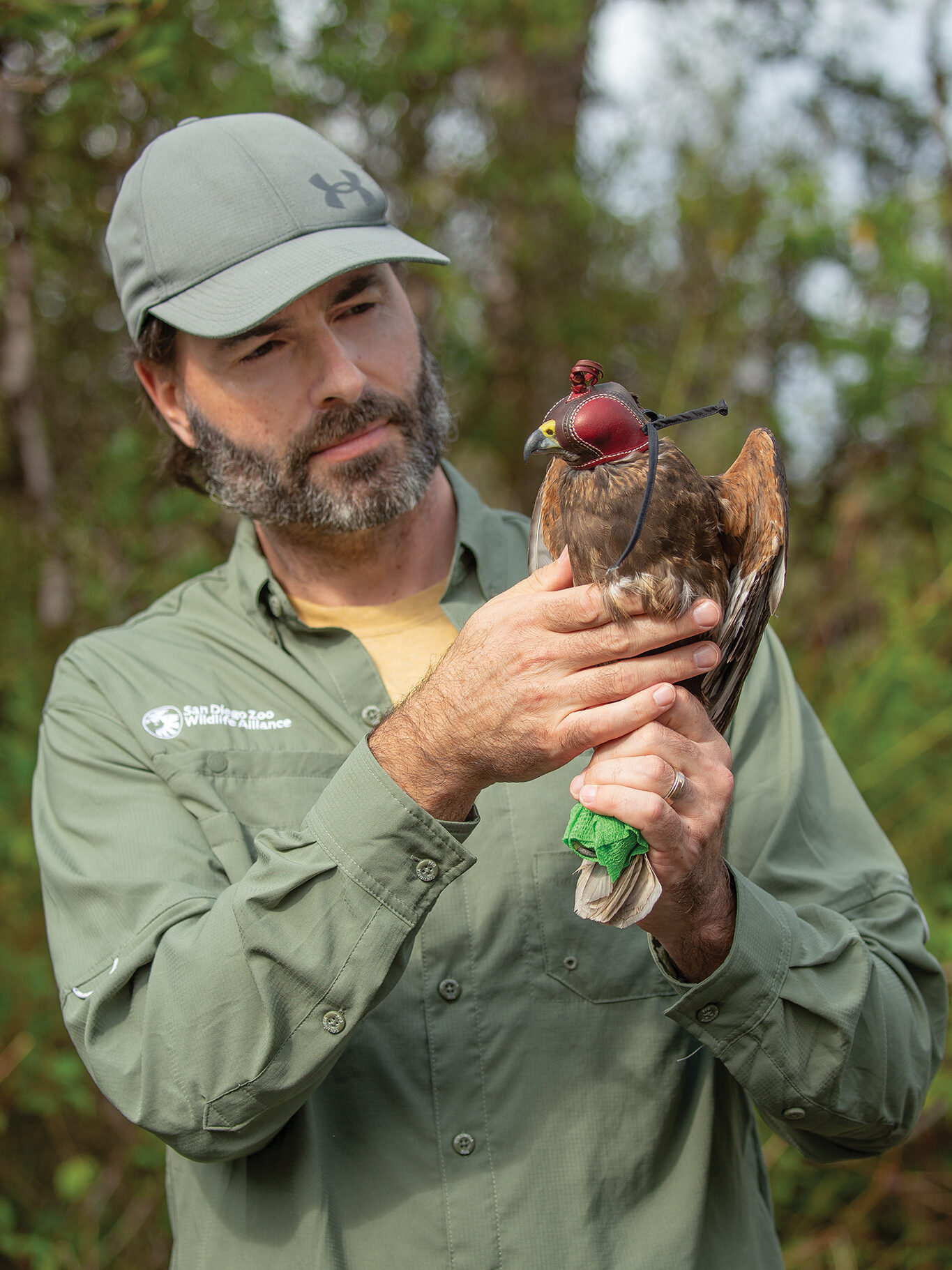
Despite their importance on the island of Hawai‘i, ‘io face a number of challenges that threaten their survival. Many challenges require further study. One of the main conservation issues is the loss of key vegetation, as the population of Hawai‘i continues to grow, and more land is developed for housing, agriculture, and industry. This has led to the loss of many natural landscapes that ‘io depend on for foraging, shelter, and nesting. The ‘io is also threatened by additional effects such as vehicle collisions, and perhaps the introduction and proliferation of non-native species, which likely deplete and degrade resources that ‘io rely on. Finally, the effects of climate change, including more frequent and intense storms, also raise concern for the conservation of the ‘io and many other native Hawaiian wildlife.
The Hawaiian hawk was protected under federal law as an endangered species from 1967 until 2020, when the population appeared to stabilize. Relatively little is known about the ‘io, however, and because the entire range of the species is restricted to a single Hawaiian island, any large-scale stressors may threaten their survival.
Technology Takes Wing
Wildlife scientists at San Diego Zoo Wildlife Alliance have partnered closely with the State of Hawai‘i Division of Forestry and Wildlife, and the University of Hawai‘i at Hilo to learn how to mitigate key ‘io conservation challenges. For such a high-profile species, the ‘io is remarkably understudied, with few formal scientific investigations of the birds in their native habitats. Consequently, there are major gaps in our understanding of ‘io behavior and ecological needs. Our goal is to conduct a large-scale GPS tracking program to gather vital data on the behavior and habitat use of ‘io, which will directly inform and enhance strategies for ‘io conservation management.
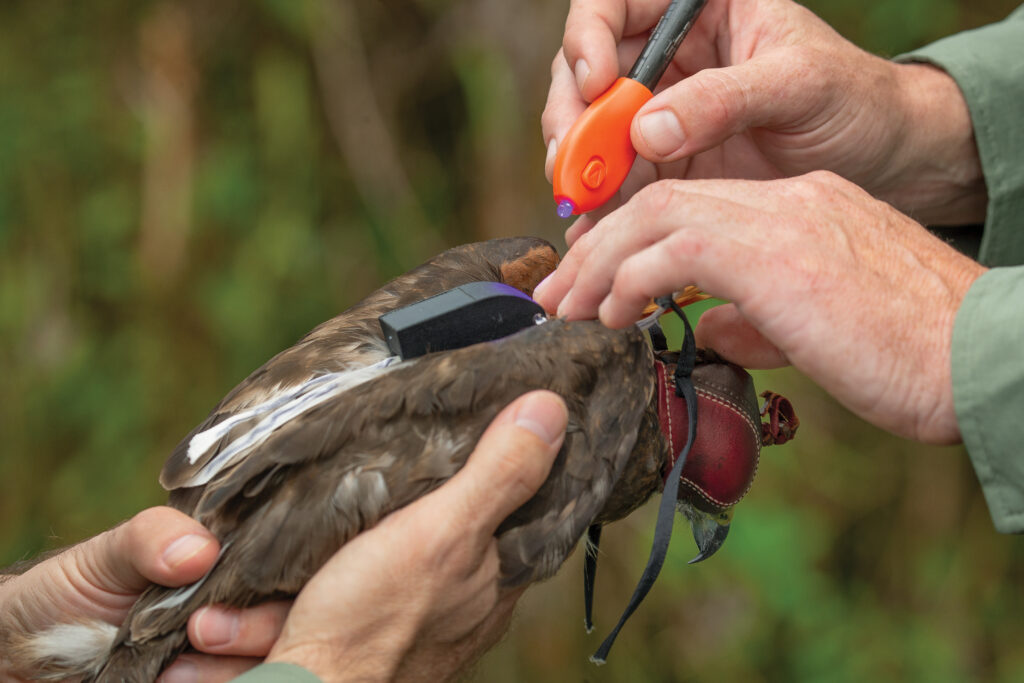
Our ‘io conservation team has capitalized on recent developments in the power and miniaturization of wildlife telemetry technologies to remotely track and monitor the movements of individual ‘io in their native habitat. We have been fitting wild ‘io with small, lightweight (~15 gram), low-profile GPS transmitters. These remarkable, high-tech tracking devices fit in backpack harnesses that are custom-fitted to each bird. Once the transmitter is deployed, our team can remotely collect large amounts of accurate location data from each ‘io without interference. Each transmitter acquires the GPS location of the ‘io multiple times each day and sends this information to us via a cellular network, eliminating the need for a biologist to relocate the bird directly in the wild. The transmitters are also solar-powered, which reduces weight and enables us to track the ‘io across multiple seasons. Furthermore, the custom-fitted backpack harness eventually falls off.
Eye in the Sky—And to the Future
Our team has successfully deployed over 40 transmitters on ‘io to date, thanks to a generous donation from the Dorrance Family Foundation and support from the National Fish and Wildlife Foundation. While fitting an ‘io with a GPS transmitter, we also collect morphometric body measurements, evaluate its health and wellness, record feather patterning, attach a small ID band to its leg, and save a single feather for future investigations into ‘io conservation genetics. The process is quick, efficient, and comfortable for the bird. After an ‘io is fitted with a transmitter and released in the location it was found, our field team observes it visually for as long as possible, to confirm its well-being. We then closely monitor the transmitter location data to make sure that each bird is moving normally.
We have deployed GPS transmitters on wild ‘io within a range of different habitats across the island of Hawai‘i, including rural neighborhoods, grasslands, and reserves. Since our project began in mid-2022, we have collected more than 200,000 GPS location fixes from the tracked ‘io. We are already seeing some fascinating movement behaviors in our preliminary analysis of this rich tracking data set. For example, it appears that ‘io home range sizes may vary according to landscape features of their habitat, and we are beginning to see how ‘io pairs partition their territories in densely occupied habitats throughout different times of the year.
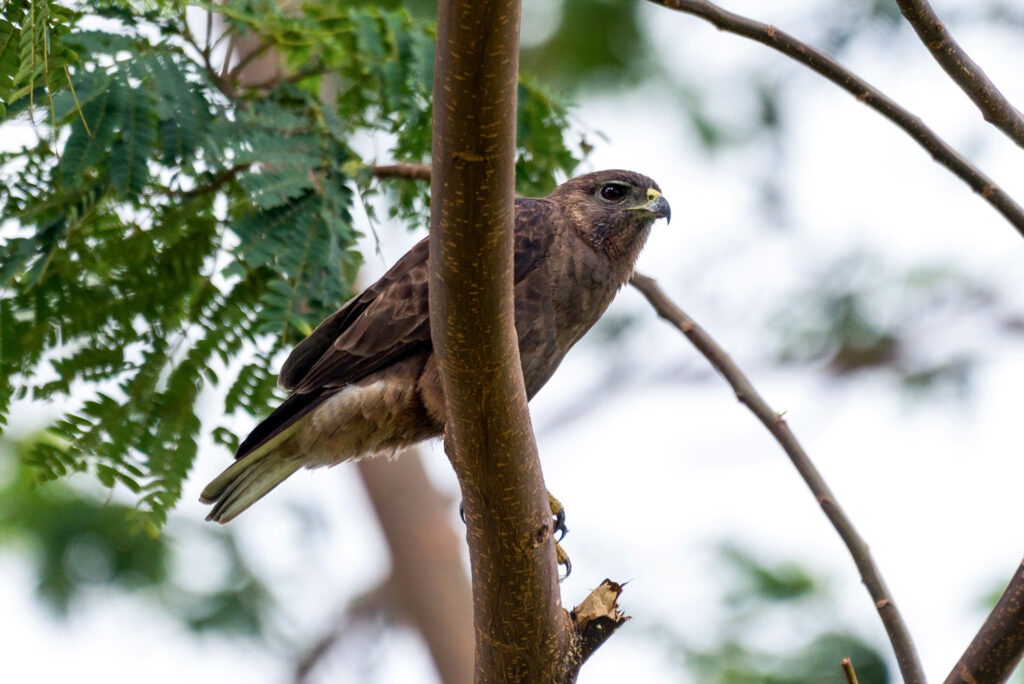
(Photo by: Mark Margerison/IStock/Getty Images Plus)
By characterizing the extent to which ‘io move across the island, our project will greatly reduce uncertainty concerning the effectiveness of current and future measures to protect and restore areas of key ‘io habitat. The tracking data will also generate insights into landscape carrying capacity for the species, and will improve estimates of ‘io population derived from field surveys.
Knowing where and when ‘io use their habitats will help fine-tune our ‘alalā Corvus hawaiiensis reintroduction techniques to maximize ‘alalā survival, especially immediately after release, when they are vulnerable to ‘io predation. Our goal is to ensure that both species coexist in the wild as they previously did for many years. Our deeper understanding of the ecology of the ‘io and the role that it plays in ecosystems on the island will help us better protect this iconic raptor and ensure its survival for future generations.
Discover what you make possible for Hawaiian birds and other vulnerable island wildlife through our Pacific Islands Conservation Hub.

